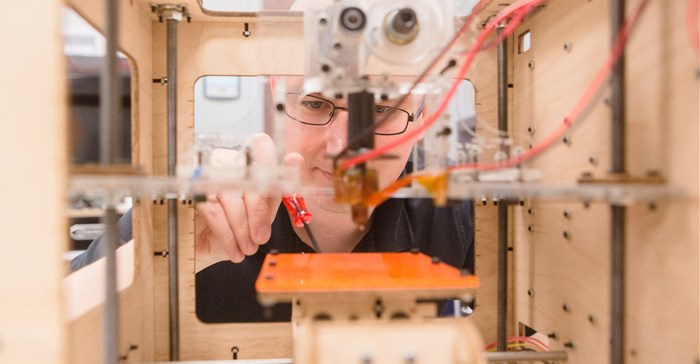A 3D-printed insert added to simple face-masks is revolutionising the way tuberculosis (TB) is detected. This new approach has the potential to detect millions of currently missed infections across the world. the inserts reliably catch and retain live tuberculosis bacteria after people who may be infected have worn the adapted mask for just 30 minutes.

The insert to detect TB was 3D printed. Image source: Getty/Gallo
This is the first time that exhalation from prospective patients with TB can be captured in such a quick and simple way. Unlike a blood test, which cannot differentiate between active and quiescent TB, the masks provide rapid detection of captured bacteria, offering a more direct potential indicator of how infectious individuals are compared to traditional sputum samples; they also reduce the need for invasive investigation.
The TB bacterium globally causes more deaths due to infection than any other microbe. According to the World Health Organisation, 301,000 people in South Africa fell ill with TB and 64,000 died from it in 2018. TB newly affects 10-million people worldwide, every year.
This diagnostic tool is a result of a chance meeting between Professor Anton Stoltz Head of Department in the Division of Infectious Diseases at UP and Mike Barer, professor of clinical microbiology in the Department of Respiratory Sciences, University of Leicester, when there was a call for scientists from the UK and South Africa to come together, work out a plan, and do some research together.
Trial
UP researchers worked in conjunction with a research team at the University of Leicester, initially sampling 24 people with confirmed TB over a 24-hour period, which showed that infectious TB was exhaled and spread when patients were asleep – a breakthrough in our understanding of the disease, demonstrating that a cough may not be required to spread the infection.
The trial showed 86.5% of the patients testing positive for TB through the use of the mask, and only 20.5% from sputum – despite all patients being positively tested for TB through sputum at the start, demonstrating the reliability of the mask for achieving consistent results.
In addition, in a further trial of 20 patients with TB symptoms, four patients with negative sputum tested positive with the mask, and the presence of TB was only detected in their sputum six weeks later – demonstrating the accuracy of the test and highlighting the potential for early diagnosis.
Stoltz says this finding is particularly important because it makes early detection of TB easier and faster. “This is a potentially universal solution that can also benefit underprivileged communities, who still struggle with accessing healthcare. In South Africa when it comes to the treatment of TB, we speak of the ‘missing millions’. These are the people that have TB but aren't aware and are not diagnosed. As a result, healthcare professionals can't get to them. With this new method, we'll be able to test a lot more people, even those not exhibiting symptoms of the disease, and get them treated early.”
The 3D insert was designed and printed at Leicester University, “The fact that the mask is a low-cost and sensitive way to detect TB before it appears in sputum has huge implications for early detection of the disease and patients having earlier access to treatment. We are really excited about how we can take this forward and influence the spread of airborne infection,” Barer says.
Future research would include studying TB in communities, as well as diagnosing the disease in children.







































